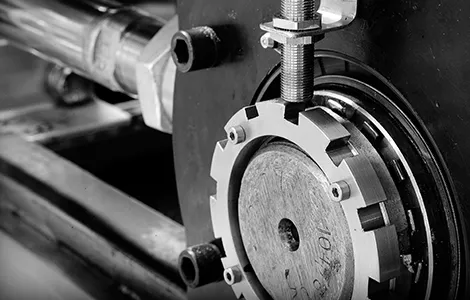Conveyor Belt Maintenance - Maximising Lifespan
May 20, 2024
Maximising Conveyor Belt Lifespan: Maintenance Strategies and Best Practices
Conveyor belt systems are the lifeblood of various industries, providing an efficient method of transporting materials and goods across facilities. Ensuring these systems operate smoothly and reliably is not just beneficial—it's crucial for maintaining productivity and minimising downtime. One key aspect of achieving this is by maximising the lifespan of your conveyor belt through effective maintenance strategies and best practices.
Understanding Conveyor Belt Wear and Tear
Before we dive into maintenance strategies, it's essential to understand the factors that contribute to conveyor belt wear and tear. These can include:
Continuous Operation: Like any machinery, constant operation can strain the conveyor belt, leading to wear over time.
Material Abrasiveness: The type of material being transported can affect the belt's durability. Rough or sharp materials can cause faster degradation.
Environmental Conditions: Exposure to harsh conditions such as extreme temperatures, moisture, and chemicals can impact a belt's integrity.
Improper Use: Overloading the belt, incorrect speed settings, and misalignment can all shorten a conveyor belt’s lifespan.
Preventive Maintenance Strategies
Routine Inspections
Regularly inspecting your conveyor belt system can help identify issues before they escalate into significant problems. Look for signs of wear, tear, and damage, such as cracks, fraying, or accumulation of debris. It's also crucial to check the belt alignment and tension, as misalignments can lead to uneven wear.
Cleanliness is Key
Keeping the conveyor belt clean is essential for its longevity. Material buildup can not only damage the belt but can also become a hazard by causing slippage or misalignment. Implement a cleaning schedule that includes removing debris from the belt surface, rollers, and pulleys.
Lubricate Moving Parts
Proper lubrication of the conveyor system's moving parts—such as bearings and rollers—can reduce friction, preventing overheating and wear. Ensure you use the correct type of lubricant that's compatible with your conveyor system.
Monitor Load Capacities
Overloading a conveyor belt can strain the system, leading to faster wear and potential damage. Adhere to the manufacturer's recommended load capacities and monitor the load continuously using appropriate sensors or scales.
Implement a Comprehensive Repair Program
Promptly repairing minor issues can prevent them from turning into major problems that can halt production. Develop a system for reporting issues and ensure repairs are carried out by qualified personnel.
Best Practices for Prolonging Conveyor Belt Life
Training for Personnel
Educate operators and maintenance staff on the proper use and care of conveyor belt systems. Understanding how to operate the system efficiently and identify potential issues can prevent misuse and prolong the belt's lifespan.
Upgrade to High-Quality Components
Investing in high-quality belt materials and components can enhance durability and reduce the need for frequent replacements. Consider upgrading to belts designed for high wear resistance or those suited to specific environmental conditions faced by your operation.
Plan for Downtime
Schedule regular downtime for deep maintenance activities that cannot be performed during normal operations. Use this time to conduct thorough inspections, make necessary repairs, and replace worn-out parts.
Keep Spare Parts on Hand
Having critical spare parts on hand can minimise downtime when repairs are needed. Identify which parts are most susceptible to wear and maintain a stock of these items for quick replacement.
To conclude…
Implementing these maintenance strategies and best practices can significantly extend the life of your conveyor belt system, ensuring it remains a productive asset in your operation. Remember, a well-maintained conveyor belt not only saves money in the long term but also enhances safety and efficiency across your facility.

